Deborah J. Ross's Blog, page 136
January 3, 2014
For Your Award Consideration...
Now that 2013 is over, it's the season of award nominations.For those of you who might be
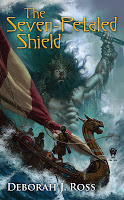 nominating work for the Nebula and Hugo Awards, here are my own offerings:
nominating work for the Nebula and Hugo Awards, here are my own offerings:
Novels:
The Children of Kings (with Marion Zimmer Bradley), DAW, 3/13Collaborators (as Deborah Wheeler), Dragon Moon Press, 5/13The Seven-Petaled Shield, DAW, 6/13Shannivar, DAW, 12/13
Novelette:
“Among Friends” (Quakers, the Underground Railroad, and a slave-catching automaton), F & SF (3-4/13)
Short story:
“The Hero of Abarxia”, When The Hero Comes Home 2, ed. G. Harbowy, Dragon Moon Press“Pearl of Tears,” Sword & Sorceress 28, ed. E. Waters, MZB Literary Works Trust
 nominating work for the Nebula and Hugo Awards, here are my own offerings:
nominating work for the Nebula and Hugo Awards, here are my own offerings:Novels:
The Children of Kings (with Marion Zimmer Bradley), DAW, 3/13Collaborators (as Deborah Wheeler), Dragon Moon Press, 5/13The Seven-Petaled Shield, DAW, 6/13Shannivar, DAW, 12/13
Novelette:
“Among Friends” (Quakers, the Underground Railroad, and a slave-catching automaton), F & SF (3-4/13)
Short story:
“The Hero of Abarxia”, When The Hero Comes Home 2, ed. G. Harbowy, Dragon Moon Press“Pearl of Tears,” Sword & Sorceress 28, ed. E. Waters, MZB Literary Works Trust

Published on January 03, 2014 12:39
January 2, 2014
[Personal] 2014 - The Year of the Hike?
 Photo by Cleo Sanda2014 looks to be The Year of the Hike. Already been on one, in addition to jaunts with the West Park
Photo by Cleo Sanda2014 looks to be The Year of the Hike. Already been on one, in addition to jaunts with the West Park Some background. When Dave and I were courting, we developed a custom of hiking on Sunday afternoons, usually on the trails in back of my house, where we could take Oka. Somehow, those went by the wayside when we moved into our current together-house. We have access to a lovely road that leads into town (the afore-mentioned West Park) but it's paved and has only a few gentle hills. Recently we've been talking about getting back into hiking, taking advantage of our current dog-hiatus to go places we can't take a dog. So, Waddell Creek (Los Osos State Park) - just gorgeous. And as soon as I figure out how to get my phone to talk to my computer, I'll put up pics.
The West Park Etc. evolved from various pairs of us becoming exercise-buddies. The walk into town, a nice outing with the added benefits of taking stuff to the bank, post office, library, etc., is beautiful and there's not much traffic. Often, it was just me and one of my neighbors, one of whom also works at home, the other used to work night shift. In recent months, a musician has not only joined us but often is the Organizing Whirlwind. Thanks to my friends, I'm now back to doing that walk about five times a week, and I can tell the difference in my endurance and leg strength.
The incredibly mild weather has made these walks even more pleasurable, plus there's the push to get them now before it rains. When it rains. If it rains. Please Rain God, let it rain.
Women's Walking Society.

Published on January 02, 2014 11:42
December 31, 2013
End Of The Year Reading
The winter holiday season has always seemed to me to be a good time to strike out beyond my usual reading preferences. Maybe that’s a relic from the childhood years when adult relatives would give me the books they thought I ought to enjoy, whether these were ones I would have ever thought of selecting for myself. And many were treasures indeed. So here are a few, genre and not.
 Top of the list is the book I’m currently immersed in, An Equal Music by Vikram Seth. It appeared on our To Be Read Bookshelf. I have no idea where it came from, perhaps a box of books from one friend or another, left with me when they departed for another continent, to be read and passed on to the library book sale. I suspect I delayed so long in cracking its cover because it looked pretentiously “litrary” and is written primarily in present tense. I’m only reluctantly willing to tackle present tense, although given sufficient motivation, I settle into it nicely. To talk about the richness of characterization or the layers of story is really to say nothing at all about the book. What captured me and held me firmly was the wonderfully inventive, detailed description of how professional musicians – in this case, the protagonist being second violin in a world-caliber string quartet – experience classical music. After eight years of piano lessons, I have a glimmering from my own experience of what it’s like, but the book takes me right into the heart of chamber music, of the intense love and hate affair between a highly skilled musician and his instrument, and of the relationships between people who play together. Into this, Seth weaves stories of love won and lost, of rivalries and misunderstandings and sheer bloody-mindedness (the characters are British, don’t you know). The music is the real star, the living heart of the book.
Top of the list is the book I’m currently immersed in, An Equal Music by Vikram Seth. It appeared on our To Be Read Bookshelf. I have no idea where it came from, perhaps a box of books from one friend or another, left with me when they departed for another continent, to be read and passed on to the library book sale. I suspect I delayed so long in cracking its cover because it looked pretentiously “litrary” and is written primarily in present tense. I’m only reluctantly willing to tackle present tense, although given sufficient motivation, I settle into it nicely. To talk about the richness of characterization or the layers of story is really to say nothing at all about the book. What captured me and held me firmly was the wonderfully inventive, detailed description of how professional musicians – in this case, the protagonist being second violin in a world-caliber string quartet – experience classical music. After eight years of piano lessons, I have a glimmering from my own experience of what it’s like, but the book takes me right into the heart of chamber music, of the intense love and hate affair between a highly skilled musician and his instrument, and of the relationships between people who play together. Into this, Seth weaves stories of love won and lost, of rivalries and misunderstandings and sheer bloody-mindedness (the characters are British, don’t you know). The music is the real star, the living heart of the book.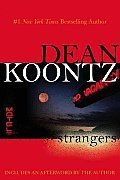 I know which box Strangersby Dean R. Koontz came from, and typically I ration those books. This one, published in 1986, is more suspense than horror, a First Contact story told in the retrospect of a botched government cover-up via hypnotic memory suppression. One of the character is a novelist newly come to fame; I smiled to myself at his pride in his IBM DisplayWriter and daisy-wheel printer with four (wow! four!) fonts. But the obsolete technology bits paled compared to the struggles of the various characters to cope with the various manifestations of the suppressed memories, to find one another, and rediscover how much love was there. As for the secret being so ruthlessly kept, it is wonderful and glorious, not at all what I expected from Koontz’s more horror-type work.
I know which box Strangersby Dean R. Koontz came from, and typically I ration those books. This one, published in 1986, is more suspense than horror, a First Contact story told in the retrospect of a botched government cover-up via hypnotic memory suppression. One of the character is a novelist newly come to fame; I smiled to myself at his pride in his IBM DisplayWriter and daisy-wheel printer with four (wow! four!) fonts. But the obsolete technology bits paled compared to the struggles of the various characters to cope with the various manifestations of the suppressed memories, to find one another, and rediscover how much love was there. As for the secret being so ruthlessly kept, it is wonderful and glorious, not at all what I expected from Koontz’s more horror-type work.Finally, a work marketed as science fiction but definitely out of my usual scope, Swallowing A
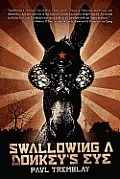 Donkey’s Eye by Paul Tremblay (ChiZine Publications). This came to me in a stack of freebies (at the last Nebula Award weekend, if memory serves). It’s not something I would go out of my way to pick up, being a sort of Animal Farm/1984 futuristic black comedy. The prose moves right along, I found the viewpoint character amusing if not always engaging and the social commentary barbed and refreshing. From the back cover: “Farm is the mega-conglomerate food supplier for City, populated with rabidly bureaucratic superiors, and sexually deviant tour guides dressed in chicken and duck suits.” If that piques your interest, do check it out.
Donkey’s Eye by Paul Tremblay (ChiZine Publications). This came to me in a stack of freebies (at the last Nebula Award weekend, if memory serves). It’s not something I would go out of my way to pick up, being a sort of Animal Farm/1984 futuristic black comedy. The prose moves right along, I found the viewpoint character amusing if not always engaging and the social commentary barbed and refreshing. From the back cover: “Farm is the mega-conglomerate food supplier for City, populated with rabidly bureaucratic superiors, and sexually deviant tour guides dressed in chicken and duck suits.” If that piques your interest, do check it out.
Published on December 31, 2013 09:58
December 26, 2013
Half Price Sale at Book View Cafe
In case you got a shiny new ereader or just feel inclined to nab some great reads at a great price, here's a half-price sale from Book View Cafe. Jaydium, Northlight, and Azkhantian Tales are all included, as are the anthologies I've edited.And many more to delight you -- science fiction, fantasy, romance, thriller, young adult, historical fiction...




Published on December 26, 2013 11:12
December 23, 2013
Writing Through Crisis
For much of my early career, I used to joke that I couldn't afford writer's block. I began writing
 Cemetery, New Orleans, 2012professionally when my first child was a baby and I learned to use very small amounts of time. This involved "pre-writing," going over the next scene in my mind (while doing stuff like washing the dishes) until I knew exactly how I wanted it to go. Then when I'd get a few minutes at the typewriter (no home computers yet), I'd write like mad. I always had a backlog of scenes and stories and whole books, screaming at me to be written. The bottleneck was the time in which to work on them. I kept writing through all sorts of life events, some happy, others really awful and traumatic. Like many other writers, I used my work as escape, as solace, as a way of working through difficult situations and complex feelings. I shrouded myself with a sense of invulnerability: I could write my way through anything life threw at me!
Cemetery, New Orleans, 2012professionally when my first child was a baby and I learned to use very small amounts of time. This involved "pre-writing," going over the next scene in my mind (while doing stuff like washing the dishes) until I knew exactly how I wanted it to go. Then when I'd get a few minutes at the typewriter (no home computers yet), I'd write like mad. I always had a backlog of scenes and stories and whole books, screaming at me to be written. The bottleneck was the time in which to work on them. I kept writing through all sorts of life events, some happy, others really awful and traumatic. Like many other writers, I used my work as escape, as solace, as a way of working through difficult situations and complex feelings. I shrouded myself with a sense of invulnerability: I could write my way through anything life threw at me!Unfortunately, I was wrong.
I hit an immovable wall. My mother had been raped and murdered when my younger daughter was but a wee babe. The DA accepted a plea bargain and so, 9 years later, the perpetrator had his first parole hearing. I put on my psychological armor, marched into San Quentin, and spoke at that hearing. A year later, I found myself in a full-blown post-traumatic crisis. I kept having waking nightmares of both terror and revenge. I couldn't eat, I couldn't sleep, and I couldn't stop crying.Also, I couldn't write fiction. Stream-of-consciousness journaling helped me get through the darkest days, but the creation of an actual story was beyond me.That creative paralysis added another dimension to the meltdown. If I couldn't write, who was I? Where were my secret worlds, my journeys of spirit and heart where people healed and things got better? Gone...and I didn't know if I'd ever get them back.
I was fortunate to have a lot of help during those dark weeks and months, some of it from fellow writers. No pep talks, just friendship, constant and true. Eventually, I was able to return to fiction writing as well, although by then, I found myself a single working mom and had a new set of demands on my time. I was able to draw on two models for personal writing success – the first being the technique of “pre-writing” (during my lunchtime walks at work) and to use small amounts of time. I carved those out by getting up 10 minutes early, opening a file on my computer, and adding something – if only a couple of words – to the current work. I earmarked part of weekends and holidays for writing time, which worked because that younger daughter was old enough to have her own interests. More than that, however, having recovered this precious part of my life, my writing, gave me the determination to never lose it again. That was essential on those mornings when I’d rather sleep in, or sunny days when the beach was calling. I had to find a new balance in my life, and it was up to me to give writing the priority I wanted it to have.
 Dolomites, by Cleo SandaWriters stop writing for all kinds of reasons. In my case, it was personal and emotional, part of a larger crisis. Other times, however, the well runs dry when the rest of life is going smoothly. Quite a few years ago, I ran into a writer I greatly admired (I think it was at an American Booksellers Association convention way back when my publisher would send various authors, including me), and I'd not seen anything from this writer in quite a few years. I introduced myself and asked when the next book would be coming out. Only when I saw the change in the writer's expression did I realize how difficult the subject was. I was probably the hundredth person that weekend to ask. (Eventually this writer did come out with several new books; I wonder now if the appearance at the ABA wasn't a way of trying to get the head back into writerly-space.)
Dolomites, by Cleo SandaWriters stop writing for all kinds of reasons. In my case, it was personal and emotional, part of a larger crisis. Other times, however, the well runs dry when the rest of life is going smoothly. Quite a few years ago, I ran into a writer I greatly admired (I think it was at an American Booksellers Association convention way back when my publisher would send various authors, including me), and I'd not seen anything from this writer in quite a few years. I introduced myself and asked when the next book would be coming out. Only when I saw the change in the writer's expression did I realize how difficult the subject was. I was probably the hundredth person that weekend to ask. (Eventually this writer did come out with several new books; I wonder now if the appearance at the ABA wasn't a way of trying to get the head back into writerly-space.)I don't think it's at all helpful to try to "cheer up" a writer in the middle of a dry period. The specific reasons -- creative paralysis, personal crisis, discouragement -- vary so much, I think it's safe to say that each of us has to find our own way through. For me, it's helped immensely to know I'm not the only one to go through it. That's the operational term, to "go through it." To come out the other side. To talk and write about what happened, in the hopes of being the light in the darkness for someone else.
I don’t know what lies ahead for me. Just because there are no thunderclouds on the horizon doesn’t mean unexpected tragedy cannot strike. I know that no matter how strong I am, I can be overwhelmed. However – and this is the big point – I’m the only one who can make me stop writing permanently. I have the ability to recover from no matter what crisis. To build my life, to return to the work I love. So perhaps instead of talking about Writing Through Crisis, I can reframe the concept as Writing Aroundabout Crisis. Remaining true to what’s important to me, knowing it’s waiting for me at the other side of the storm.------------
This essay also appeared as an entry in Janni Lee Simner's Writing for the Long Haul series. It's a wonderful series, full of wisdom, tears, and support.

Published on December 23, 2013 13:10
December 20, 2013
The Artist Behind The Cover
My story, "The Hero of Abarxia" appeared in When the Hero Comes Home 2, edited by Gabrielle Harbowy, from Dragon Moon Press.The story was a particular delight to write because the hero was a horse and my love of horses was in full swing. Also, my friend Bonnie got to enjoy the story in pages proof form while she could still focus enough to read. The book has a beautiful cover, and here it is, with the proud artist.




Published on December 20, 2013 11:16
December 18, 2013
Memoir, Cancer, And Tent Camping: My Friend Connie
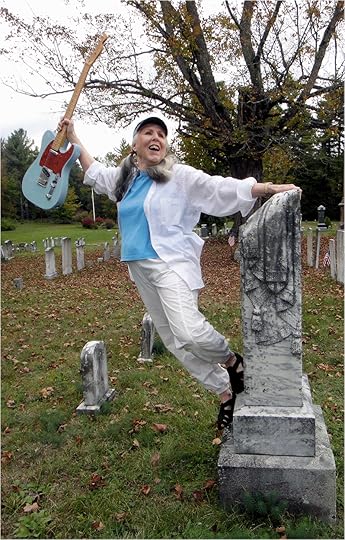
When a friend or family member is diagnosed with cancer, the effects ripple through the community. If we and our friend are relatively young, we may feel shock but also a sense of insulation. We have not yet begun to consider our own mortality, or the likelihood of losing our peers to accident or one disease or another. It hasn’t happened to us yet and the odds are still in our favor, particularly if we don’t smoke or drive drunk, we exercise and eat many leafy green vegetables. As the years and the decades go by, most of us will see an increase in morbidity if not mortality in our friends. They – and we – may develop osteoarthritis or Type 2 diabetes, high blood pressure, high cholesterol, all those common ailments of aging. Some of us will get cancer.
When my best friend Bonnie was diagnosed with ovarian cancer about 5 years ago, she was the closest friend I had who had cancer. Since then, other friends have been diagnosed and some have died; Bonnie died in October (peacefully, at home). One of the things Bonnie did way back when was find support groups for women with cancer. Maybe it’s a holdover from the consciousness-raising groups of the 1970s, but it’s practically a reflex: whatever is going on in your life, you grab a bunch of women to talk it through. Do men do this, too? If so, it’s a secret from me.
It turned out that a cluster of women who were at college with us at the same time and who still lived in the area wandered through these groups at one time or another, or were otherwise associated with this community. Some have also died, some aren’t doing too well the last I heard, and some are thriving. One of these is my friend Constance Emerson Crooker.
Connie and I weren’t close in college, but it was a small school and everybody pretty much knew one another in passing. She wasn’t an avid folk dancer or a Biology major like me, but she and Bonnie stayed in touch so I’d hear about her from time to time. Connie was one of those who stepped up to the plate in Bonnie’s final weeks, and I was not only grateful for the extra and very competent pair of hands but for the chance to get to know her better.
Connie’s a long-term melanoma survivor, a “late stage cancer patient,” and makes no bones about being one of the lucky ones. She writes, “So, in the winter of 2009, when I got the good news that my expiration date had been extended and that I had won the Melanoma Treatment Lottery, where the odds are about as unfavorable as the Publishers Clearing House Sweepstakes, I was determined to end the boredom of dying.”
One of the things Connie did was to go tent camping across America. Another thing was to write about it and her cancer. I’ve been slowly reading and savoring her memoir, MelanomaMama: On Life, Death, and Tent Camping. Tent camping does not rank high on my list of favorite things to do. I didn’t grow up camping, and I’m poor at it at best. But as I wended my way through her breezy story-telling, I realized it didn’t matter whether it was tent camping or ice skating or tango dancing (which Bonnie did, clear through the week she went on hospice) or anything else that gives us intense joy.
William Blake wrote that if a fool would persist in his folly, he would become wise. I think that if we’re blessed to have enough time and reflection we can move through the shock and terror and sheer awfulness to some other place, one of “sucking the juicy joy out of life.” Which is why Connie’s tent camping spoke to me and I’m grateful she wrote her book.\
When something awful happens to us or when we at last glimpse it in the rear-view mirror, many of us want to write about it. If we’re fiction writers, we use our imaginations to spin out stories, often in our preferred genre. A huge weight, a pressure of all the intense experience, the fear, the relief, the unhealed and oozing wounds, cries out for us to make sense of the whole thing. That’s one of the things that fiction does, and often it does it much better than straight memoir narrative. Fiction requires emotional coherence, at least genre fiction does. I make no promises about literary or experimental stuff. We think, If I could just nail this down in a story, it would make sense. I understand that longing, that temptation, and at the same time, in my own life, I’ve had the good fortune to pay attention to my gut feeling that I wasn’t ready. Maybe I’ll never be ready to “tell my story.”
But Connie is and she does, with wit and the ferocious clear-sightedness of one who knows she has been reprieved and what it has cost her. Some parts are travelog, some parts are survivalog, some are the observations of an intelligent, thoughtful person who has had a long time to decide how she wants to live each day. I can’t read very much of it at a time; it’s too “chewy.” I need to reflect on what she’s shared and what it means in my own life.
In Connie’s writing, I recognize something quite different from the impulse to tell our story to make sense out it. It is the even more powerful need to take what we have suffered and have it make a difference. Have our lives make a difference.
“Hey world,” she seems to be saying, “I was here. Me, the only Connie there is or will ever be.”
“So now, I’m back to scans every three months. Watch and wait. Watch and wait. Wait for the pink and turquoise sneaker to drop. But I keep enjoying my miraculous recovery.
“When I say miraculous, I don’t mean a conventional miracle. … It’s miraculous that a Monarch butterfly can wing its way from Canada to one small patch of breeding ground on a Michoacan hillside. It’s miraculous that a black hole’s sucking gravity can pull everything, including light into is gaping maw. It’s miraculous that there are billions of stars in our galaxy and billions of galaxies in our universe…
“And I’m still here, gazing with wonder at it all.”
And sharing that wonder with us. Thanks, Connie.

Published on December 18, 2013 01:00
December 6, 2013
A Holiday Gift For You
These are tough times for most of us, and they get especially tough when we want to give our loved
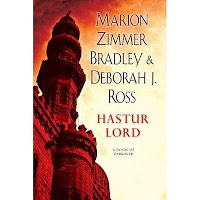 ones something special for the holidays. It’s also a season when we express our appreciation for one another.
ones something special for the holidays. It’s also a season when we express our appreciation for one another.So here is my gift to you – for yourself or to give to someone you love. I’m offering autographed copies of some of my books (and a few others), first come first serve, one per person. If you feel so moved, you can send some postage money my way by using the Donate button at the lower left. If there’s enough to cover my postage costs, I’ll offer a second round of free books.
Use the new Contact Deborah link at the upper left and let me know your first and second choices, and whether you’ll take one of my selection if they aren’t available. I’ll get back to you about where to send your book.
Here are the choices:Hastur Lord(hardback) – 5 copiesThe Children of Kings(hardback) – 2 copiesZandru’s Forge(hardback) – 3 copiesThe Alton Gift(paperback) – 3 copiesA Flame in Hali(paperback) – 3 copiesShannivar(paperback) – 3 copiesDead Is The New Black, by Marlene Perez (autographed, paperback)Evermore, by Alyson Noël (autographed, paperback) Outside US? Sorry, I can't afford postage by myself; ask about sharing the cost.
Blessings and joy to all! -- Deborah

Published on December 06, 2013 01:00
December 4, 2013
Who Needs Dialog?
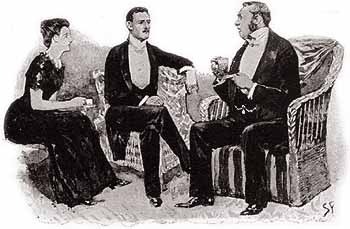 I love to “talk shop” with other writers. I learn so much about my own process and my weaknesses because it’s always easier to see the flaws – and the strengths! – in someone else’s work. Recently, I had the mirrored experience of serving as a beta reader for another writer’s novel and receiving similar feedback on one of my own. The thematic similarities and differences between the two very early versions of the stories are irrelevant. What fascinated me was that we used dialog in diametrically opposed ways in our story construction: my friend’s rough draft read like a screenplay, and mine had comparatively little conversation. We’ll both end up with balanced manuscripts, but we’ve started from opposite places.
I love to “talk shop” with other writers. I learn so much about my own process and my weaknesses because it’s always easier to see the flaws – and the strengths! – in someone else’s work. Recently, I had the mirrored experience of serving as a beta reader for another writer’s novel and receiving similar feedback on one of my own. The thematic similarities and differences between the two very early versions of the stories are irrelevant. What fascinated me was that we used dialog in diametrically opposed ways in our story construction: my friend’s rough draft read like a screenplay, and mine had comparatively little conversation. We’ll both end up with balanced manuscripts, but we’ve started from opposite places. Dialog, which is the transcription of what each character says, rather than a summary in narrative, is one of a writer’s most powerful tools. It’s also one that’s easy to abuse, either by using it too much or too little, or asking it to perform functions in the story that it’s not well-suited for. Certainly, it’s possible to tell a story entirely in dialog form, just as it’s possible to write a story entirely in narrative with zero dialog. Most stories fall in the comfortable middle zone, especially if they involve more than one character capable of speech.
When we write prose stories, we can choose to show action in a variety of ways, narrative being one, dialog another. Dialog isn’t very good for showing events at a distance; characters can be discussing those events or relaying them, but both are “off the scene” and hence have less immediacy. On the other hand, if the emphasis is on the reaction of the characters to those events, dialog can be of immense help. One of the strengths of dialog is that if skillfully handled, it can give us a window into a character’s inner state without being in that character’s head. Screenplay writers know this and use dialog to reveal character, to heighten and resolve tension, to create conflict, and to further the plot.
Which brings me to one of the things I saw in my friend’s manuscript. She came to her story with “screenwriter’s mind.” She used dialog not only to convey the content of conversations (relationship building, changing, exchange of information between characters, etc.) but to sketch out the action that she would later fill in with narrative. I’m a bit in awe of this since what little I know of screenplay writing has thoroughly impressed me with what a high-wire act it is to use only dialog and highly abbreviated descriptions of scene and action to tell a story.
I, on the other hand, used bits of narrative as shorthand for the conversations that will be developed in revision. If anything, my rough draft was too focused on the inside on my protagonist’s head, not what she was doing or saying. One of the consequences was that other characters are suggested rather than developed, whereas in my friend’s draft, her extensive use of dialog has done much of this important work.
There isn’t any one right way to weave dialog into a story, any more than there is one single right way to write. The more options we have, the more tools we have in that magic box of tricks, the better we will be at telling a range of stories. So here’s a challenge for your next story project. If you’re like my friend, a writer who uses dialog heavily to set the major blocks of her story, challenge yourself to write that first draft with as little dialog as you can. Can you do it with none? What are the circumstances under which you absolutely have to put it in?
If you’re like me, a writer who puts in just a bit here and there, challenge yourself to use dialog to create the backbone of the plot, to introduce and reveal character, to heighten and resolve tension, without using your normal narrative techniques.
My guess is that either way, the process will be both uncomfortable and revealing. Have you been relying on dialog as a preferred and therefore easy way of transcribing the movie between your ears? Or have you regarded it as a frill, lightweight chit-chat instead of an essential foundation of the story?
The good news is that no matter where we start, whatever our natural propensities and habit, it really doesn’t matter what order we weave in and shift around the elements of narrative and dialog. What matters is that final draft when everything has come into balance and the story shines!
Art by Sidney Paget (1860 - 1908)

Published on December 04, 2013 01:00
December 2, 2013
STARS OF DARKOVER Table of Contents

I'm thrilled to announce the lineup of stories for the next Darkover anthology, Stars of Darkover, that
I had the joy and honor to edit, along with Elisabeth Waters. So many fine writers fell in love with Darkover and sold their first stories to Marion Zimmer Bradley, and then went on to stellar careers. The anthology will be released in print and ebook formats in June 2014, in time for Marion's birthday.
The stories are as awesome as the night sky over the Hellers.
Stars of Darkover Table of Contents
All the Branching Paths by Janni Lee SimnerThe Cold Blue Light by Judith TarrKira Ann by Steven HarperThreads by Elisabeth Waters and Ann Sharp Wedding Embroidery by Shariann LewittThe Ridenow Nightmare by Robin Wayne BaileyCatalyst by Gabrielle HarbowyThe Fountain’s Choice by Rachel Manija BrownHouse of Fifteen Widows by Kari SperringZandru’s Gift by Vera NazarianLate Rising Fire by Leslie FishEvanda’s Mirror by Diana L. PaxsonAt The Crossroads by Barb CaffreySecond Contact by Rosemary Edghill and Rebecca FoxA Few Words For My Successor by Debra Doyle and James D.MacDonald

Published on December 02, 2013 01:00



